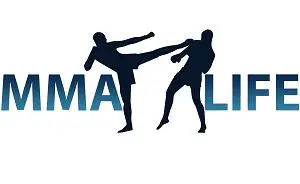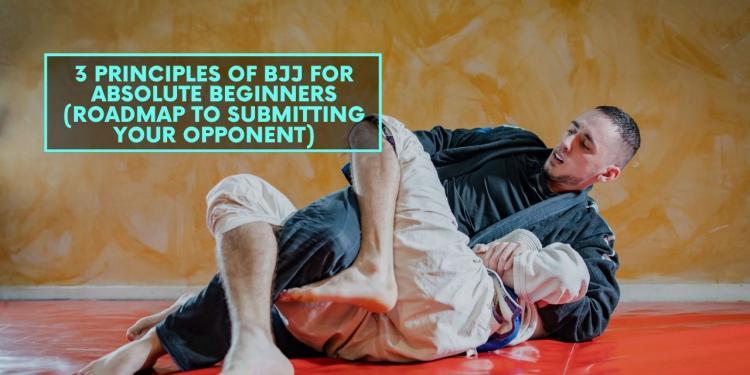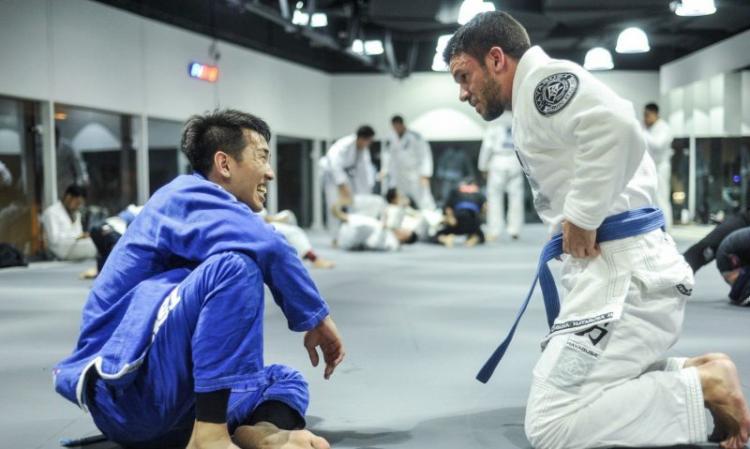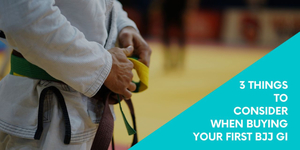Starting jiu jitsu is tough and we’ve all been there. You learn all these complicated techniques that forces us to contort your body in every which way. And then you think you got some techniques down but when you start rolling/sparring, everything you learn goes out the window and you are nothing more than a chicken with its head cut off.
The end-game of jiu jitsu is to submit your opponent—but the roadmap to getting there is not easily discernible to a beginner. When I started rolling, I had no clue what to do and where to start. Do I grab their arms? What do I do with my legs? Where do my arms go? How do I even go about applying a submission?
I see a lot of BJJ beginners with the same problems. So I decided to write this article for absolute beginners to jiu jitsu. These are the 3 basic principles to jiu jitsu provides a roadmap for you to get to the end goal of submitting someone. Hope it helps.
Principle 1: Get pass your opponent’s legs
The absolute first thing you should do is get pass their legs. In jiu jitsu jargon, it is called “passing the guard.” Passing the guard is nothing more than getting your body past their legs. Their legs is the first line of defense and once you get your body past it, you have negated a huge portion of their defense.

When I was first starting out, this was the most foreign principle to grasp for me. Whether we started rolling on our knees or standing up, it never occurred to me that the first goal of jiu jitsu is to get past your opponent’s legs.
Of course there are various ways to get past their legs and it is hugely dependent on what your opponent does. Your classes will invariably teach you to “pass the guard”, which is another way of saying get past the legs. Of course, like any other martial art, the guard passing you drill in class will invariably be more technical than live rolling/sparring. So when starting out—remember what you drilled in class but do not worry too much about the minute details. All you need to think about is getting pass their legs.
In order to get past your opponent’s legs, your body needs to be on the outside out their legs somehow.
Principle 2: Obtain and Maintain Dominant Position
After passing their legs, you then should aim to obtain and maintain positional control.
Once you get past their legs, that is half of the battle. But after getting past their legs, they still have their hands. They will either mobilize the hips and/or the arms in order to prevent you from obtaining dominant position.
So what are dominant positions in jiu jitsu and grappling? Well the dominant positions are when you are in mount, side control, north-south, or kesa gatame, taking the back, and numerous other wrestling positions. Dominant position usually relies on you being on top and the other person being on the bottom—or you having a firm hold of their back.
So after passing their legs, the goal is to somehow end up on top position and maintain that top position. Maintaining the top position will come with time as you begin to feel where your opponent’s force and your own balance. It only comes with time on the mat—there is no substitute for it.
For principle 2, I always remember an adage that my training partner once told me “if you’re on top, take away space…if you are on the bottom, create space.”
Principle 3: Isolate and submit
Now we finally on principle 3—submitting your opponent. Submissions is what brazillian jiu jitsu is known for. And although it is the end goal, you will not be able to do it if you do not first accomplish the first two principles. Remember, always think about positions before submissions.
But very rarely can you apply submissions successfully without first setting it up. This is especially true against anyone with any decent amount of grappling experience. In order to submit someone, you must first isolate a limb you are trying to submit (or their neck). Isolating a limb (or the neck) allows you to gradually break down their defenses so that it is weak enough for you to submit.
For me, I love to isolate one of their arms using my bodyweight. Once the arm is isolated, I begin to work towards a submission of that arm. Once the arm is isolated, they are unable to use any other part of their body to defend against an impending submission attempt. They can only defend your submission using the arm that I isolated. Because you are able to use multiple limbs and regions of your body and they can only use the isolated arm, you have a huge advantage now. So once the arm is isolated, it is only a matter of time before I get a submission, assuming they don’t successfully escape.
[divider style=’full’]
Hopefully the breakdown above will help you when you are starting out on your jiu jitsu journey. If it helps, please share it with others!
Also, if you are just starting with jiu jitsu, I recommend go to our gear review section to see our recommendation of some of the best jiu jitsu gear to get.





